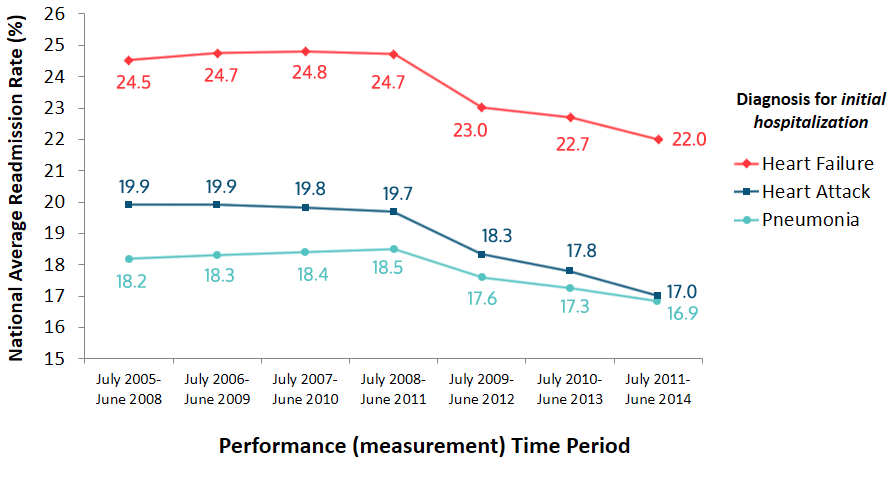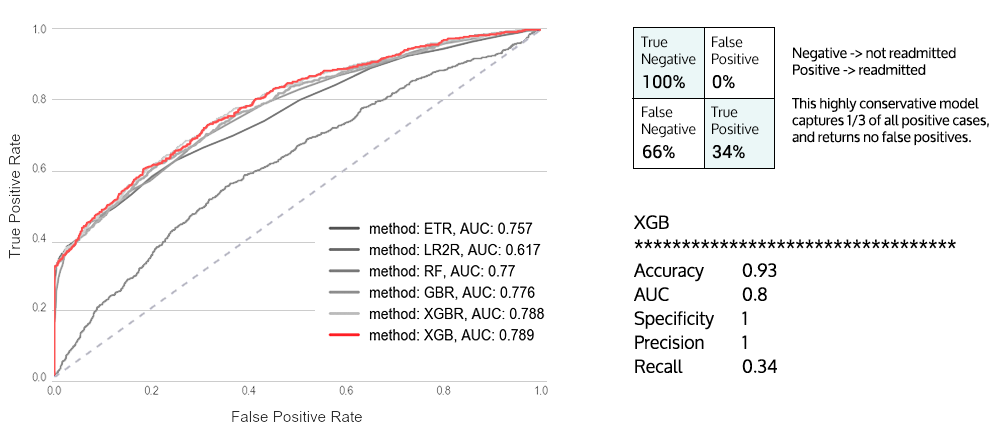ICU Readmit: Intensive Capstone Unit - Readmission Prediction
A predictive modeling tool providing on-par performance to help combat costly hospital readmission issues--can be augmented with healthcare domain knowledge inputs
The Affordable Care Act (ACA) has put hospitals under pressure to reduce readmissions of patients, since Centers for Medicare and Medicaid Services (CMS) announced their Hospital Readmissions Reduction Program (HRRP). The HRRP is an anti-incentivized program where there is up to a 3% financial penalty for hospitals from Medicare. Overall, the program has saved the taxpayers billions of dollars in unnecessary readmissions. The program had amazing initial progress, but has slowed in the wake of multiple factors including understanding of readmission risk.
Reliably predicting and alerting medical professionals to readmission helps guide medical decision while improving patient outcomes. A predictive model for readmission is presented using retrospective data using the MIMIC III dataset (Beth Israel Deaconess Medical Center) with the intent of being used at point of admission and discharge for patients admitted to the ICU. A diagnostic model that has high selectivity (low false-positive rate) can be made without domain expertise and specific feature engineering. This model's prediction was conveyed in a patient dashboard which displays contextual factors about a patients diagnosis while providing ease of use for providers to enable medical decision making at the point of care.
The biggest complaint by providers about electronic systems is their ease of use, particularly the number of clicks it takes to get information from the system. ICU Readmit aimed to reduce this to the bare minimum by providing the provider a patient level overview of all labs while also giving access to the patient record. This aims to assist with patient handoff, review, discharge decisions, and more. The tool has uses outside of the provider by virtue of the aggregation of data such as clinical auditing of core measures and a patient synopsis for business offices.












